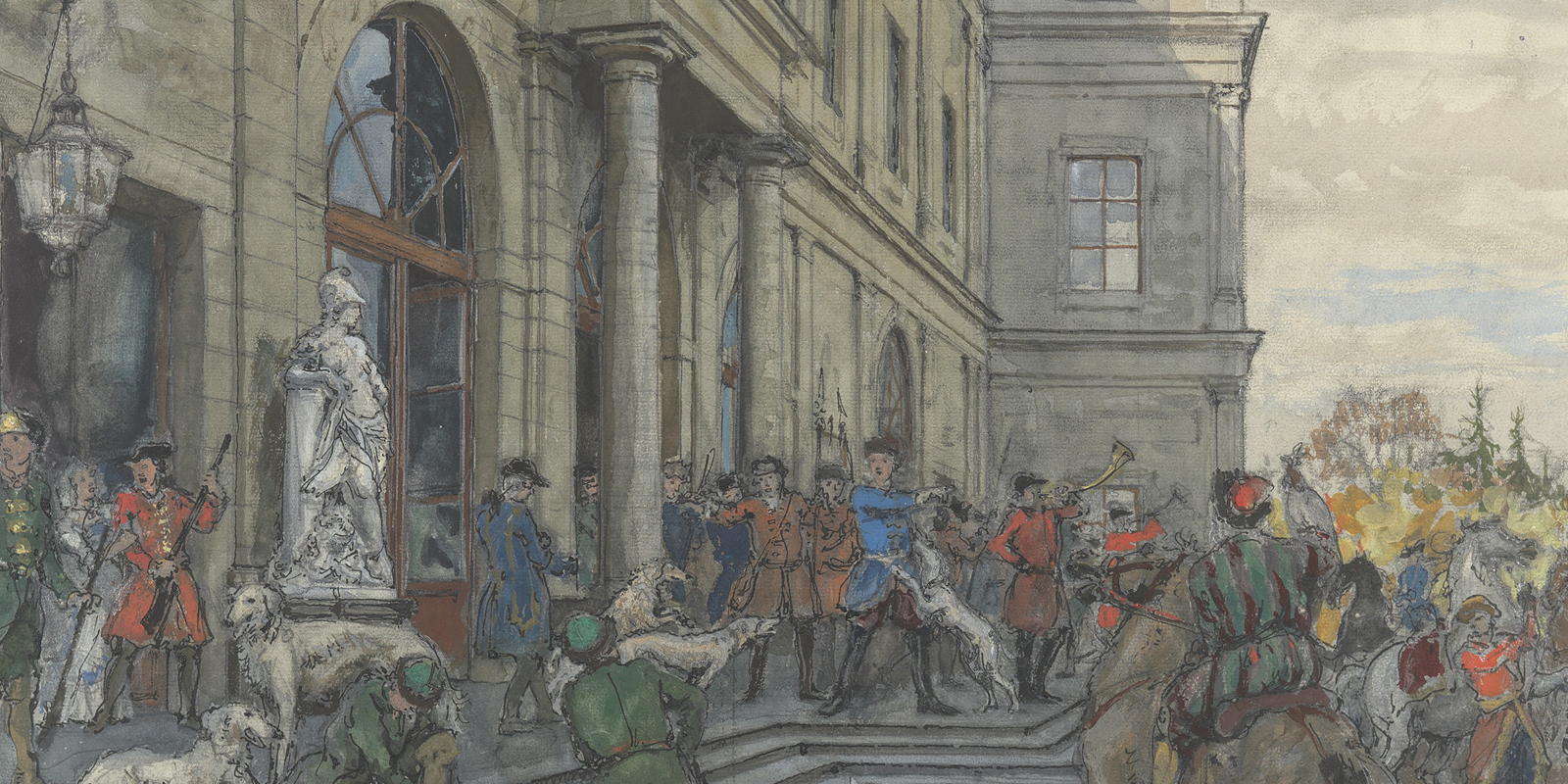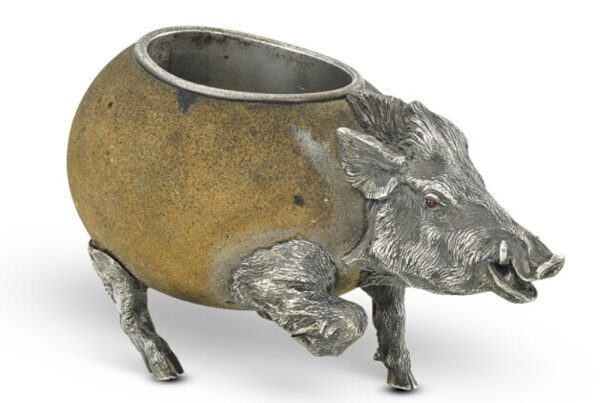First of all, let me say how pleased I am that Christie’s have finally produced a printed catalogue. I do hope that this ‘ancient’ method of advertising sales will be resurrected despite the management’s ill-conceived cost-cutting practices. These catalogues constitute an invaluable record for dealers, collectors and scholars, and I’m always glad to have copies on my shelf.
HARRY WOOLF COLLECTION
Christie’s get 2021’s second Russian Art Week underway on Monday 29 November with three sessions of sales. The stand-out session starts at the crazy time of 1pm, so many collectors will be scrambling for an early lunch. It features 86 lots from the collection of the late Harry Woolf (total estimate £2.2-£3.2 million) – one of the largest private collections of Fabergé to come to market in recent memory, probably since the Forbes Collection in 2004. Christie’s, in this respect, cite the Kazan (1997) and Di Portanova (2000) Collections which they handled themselves, but neither can seriously be compared to the Woolf collection.
Woolf, whose paternal grandparents were Russian, began buying Fabergé in 1972 when it was relatively inexpensive. Following the sale of his London chain of pharmaceutical outlets in 1989, his collecting went into overdrive. He continued collecting almost to the day he died, in November 2019.
Christie’s talk about ‘a selection of Fabergé masterpieces,’ but that’s a bit flamboyant. The collection is great, but talk of ‘masterpieces’ is slightly overstating the case. Let’s call it a varied ensemble meticulously selected by somebody who really knew what he was doing. Some pieces seem rather mundane, but even these are of exceptional quality and in great condition. Any Fabergé collector would be proud to own them. There are no Plain Janes!
A number of items are familiar, as Woolf often lent pieces to museum exhibitions. Roughly fifty pieces from his collection remain with his family – 14 of them featuring in the blockbuster Fabergé exhibition that opened at the V & A on November 20.
*
Woolf had an especial penchant for stone-carved Animal Figures, and 22 of these begin the sale (there are a couple more in the middle). I’m not sure how many Fabergé animals the Queen has, but Woolf’s probably rate on the same level. The estimates total £470,000-690,000, but I’m sure those numbers will be far exceeded – not least because all the creatures are in pristine condition, with half-a-dozen in their original fitted cases. The majority are fantastic and I’m not sure why such lowly estimates have been thrown on them. There have been plenty of big prices at recent auction sales to prove my point. I think estimates should present the real and reliable market situation, not some confusing and meaningless numbers that will undoubtedly be surpassed. Auctions play the low-estimate game all the time to create ‘auction fever.’ How honest is this practice? After successful sales, auction employees proudly announce their supposed triumphs… but if you come out with lowly estimates, any result will be a super achievement!
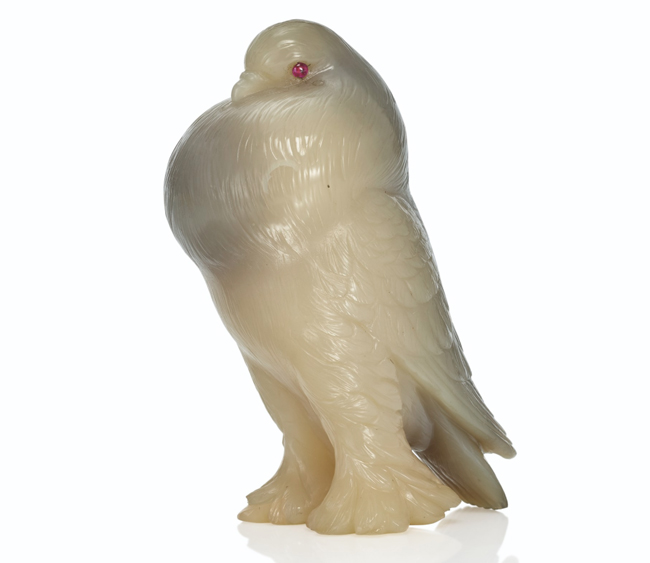
Lot 11, A Jewelled Chalcedony Model of a Pouter Pigeon
The highest estimate-band of £50-70,000 applies to three items: a chalcedony Pouter Pigeon (Lot 11); a Blue Tit carved from lapis lazuli, yellow chalcedony, bowenite, agate and onyx, with rose-cut diamonds and gold feet (Lot 12); and an agate Capercalzie in its original box (Lot 17). Two animals made from Kalgan jasper have diamond-set eyes: an Elephant (Lot 4) and a Rhinoceros, once owned by the British poet Edward James (Lot 2). Both have estimates of £20-30,000, although only the rhino comes with its original box.
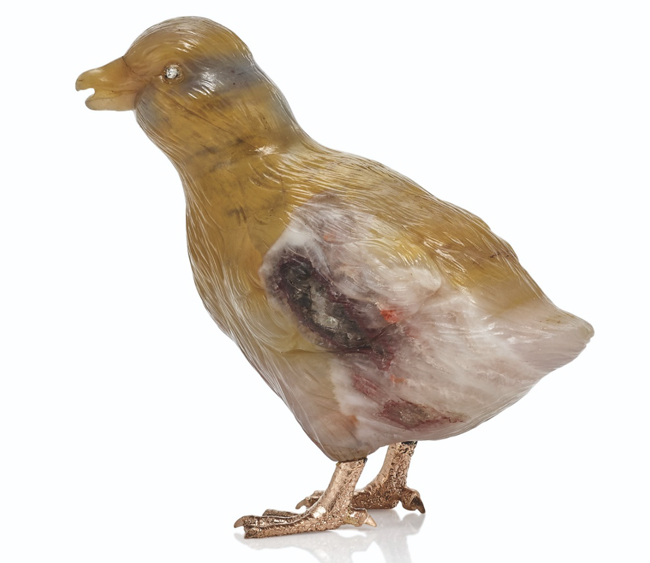
Lot 5, A Jewelled and Gold-Mounted Agate Model of a Duckling
Woolf seems to have been attracted more by exquisite craftsmanship than the mischievous humour that often characterizes Fabergé critters. Henrik Wigström’s gold mounted yellow chalcedony Duckling with olivine eyes is an earnest little fellow (Lot 5, est. £25-35,000), while a pale blue chalcedony Mouse catches the eye thanks to the rose-cut diamonds that bespangle it ears and long tale (Lot 13). Both have estimates of £25-35,000.
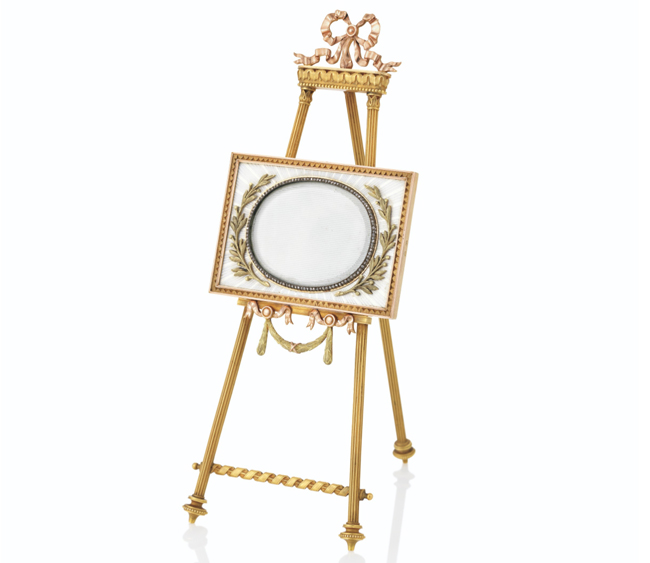
Lot 32, A Jewelled and Guilloché Enamel Three-Colour Gold Photograph Frame
The sale also has an ensemble of photo frames – nine to be precise, with the most intricate in the form of an artist’s easel (Lot 32, est. £80-120,000). The same estimate applies to a tricolour gold and moss agate frame shaped like a kite (Lot 41). A gold-mounted nephrite and enamel frame (Lot 37) comes with an estimate of £50-70,000, as does a gold jade frame from the Wigström workshop, complete with Zuev miniature of Princess Olga Orlova (Lot 46).
The sale’s five kovches include a gem-set silver-mounted kovsh, with a lustre-glazed ceramic body by the Imperial Stroganov School (Lot 80, est. £70-90,000).
The collection is strikingly diverse in terms of purpose and materials – about all that’s lacking are clocks and Easter eggs (Woolf never went in for imperial Fabergé eggs, though I believe he unsuccessfully tried to land the 1913 Winter Egg when it came on the market). The only timepiece being offered from the Woolf Collection is a gold pendant Watch with diamonds, pearls and sunburst guilloché enamel, complete with its original fitted wooden case (Lot 40, est. £50-70,000).
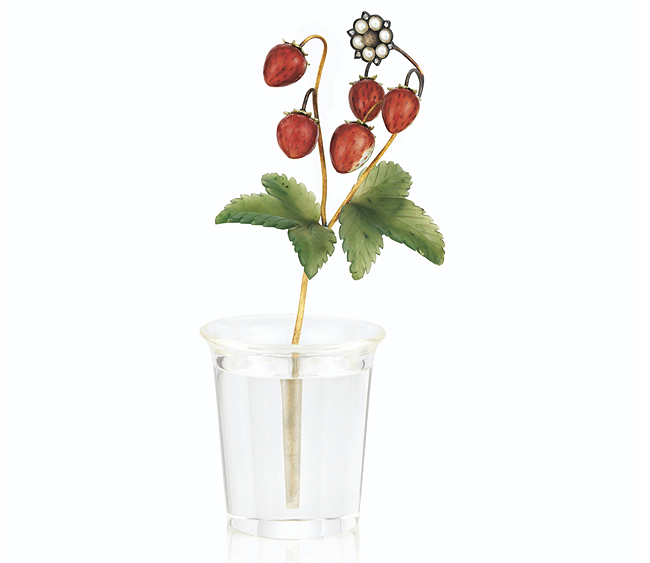
Lot 47, A Gold-Mounted Enamel, Nephrite and Rock Crystal Study of Wild Strawberries
Predicted to be the sale’s biggest seller is a gold-mounted enamel, nephrite and rock crystal study of Wild Strawberries in a Glass (Lot 47, est. £200,000-300,000). A similar study is in the Royal Collection.
A gold and guilloché enamel Bonbonnière aping the Corno Ducale worn by the Doges of Venice, embellished with rubies, emeralds, diamonds and pearls, is touted at £80-120,000 (Lot 26). Another item of headwear from which Fabergé derived inspiration was Monomakh’s Cap – incorporated in a two-colour gold and purpurine Pendant by Alfred Thielemann, with dangling rubies, peridots and rose-cut diamonds (Lot 76, est. €15-25,000).
Several other items embody Fabergé’s supreme ingenuity. A gold and platinum mosaic Brooch, made from precious stones, resembles a strip of embroidery (Lot 21, est. £70-90,000). A Wigström Table-Lighter takes the form of a miniature gold samovar (Lot 68, est. €60-90,000), while a jewelled gold Scent-Bottle, set with a sapphire, diamonds and rubies, is shaped like a tube of paint (Lot 25, est. £8-12,000). Most extravagant of all is a silver-mounted aventurine quartz Tray in the form of a pond, with a silver goose and gander on either side tugging at a hapless nephrite frog (Lot 61, est. £40-60,000).
WORKS OF ART
The 124-lot session devoted to Fabergé & Works of Art, that follows on from the Woolf Collection at 3pm, pales in comparison – although it boasts one of the day’s finest and largest animal figurines, with an Emanuel Nobel provenance to boot: a beautifully carved, warm brown agate Dormouse with silver whiskers and cabochon sapphire-set eyes, clutching strands of gold straw with a whimsical expression (Lot 104, est. £80-120,000).
There’s a series of ten cute silver animals (Lot 112-121), all with reasonable estimates in the £20-35,000 range. I particularly like the 6½-inch Rappoport Pig. It’s not just ‘recumbent’ (the term in Christie’s catalogue) – it looks absolutely knackered (Lot 118, est. £25-35,000).
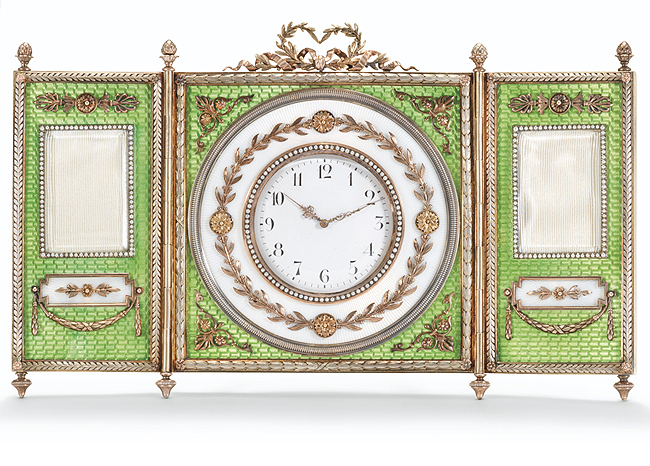
Lot 109, A Jewelled and Guilloché Enamel Silver-Gilt Triptych Clock and Frame
Three of the session’s four clocks are pretty plain. The only one worth any attention – though it’s been on the market a couple of times in recent years – is by Victor Aarne, with a dial set inside a pale green guilloché enamel triptych frame (Lot 109, est. £80-120,000).
The Enamel section (18 lots) is small, with little to write home about. The best item – an oval, two-handled Rückert platter that I coveted – is damaged in the centre and, alas, so poorly restored that, for me, it’s a write-off. The Porcelain (14 lots) is unexciting, with various plates from various factories such as we see in every sale. There are four Kovches from the 17th and 18th centuries – all in silver, including an imperial presentation kovsh (probably Moscow, c.1701), the handle engraved with a bunch of grapes and the sides with a dedication in Old Russian (Lot 182, est. £20-35,000).
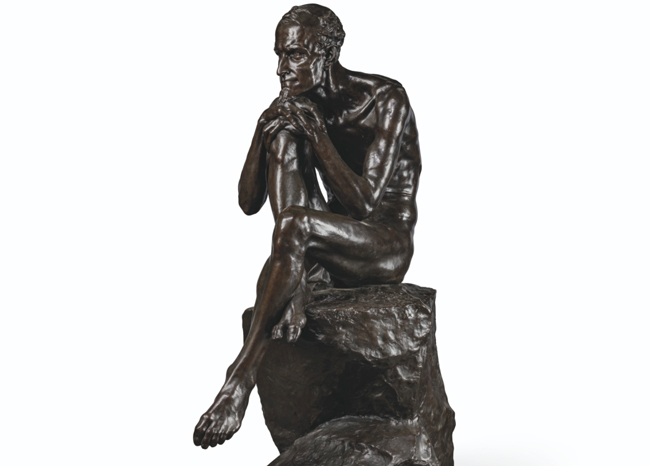
Lot 187, A Bronze Model of Mephistopheles
There’s the usual batch of bronzes, eleven in all. Christie’s have highest hopes for Antokolsky’s 5ft 8in statue of Mephistopheles seated on a rock, cast by Thiebaut Frères/ Paris (Lot 187, est. £150-200,000). Patina on the piece looks suspiciously fresh.
There are also eleven icons (Lots 197-207), the best being: a silver-gilt cloisonné and champlevé enamel icon by Kuzmichev (Moscow 1899-1908) showing the Mother of God of Kazan (Lot 200, est. £60-90,000); and a cloisonné and champlevé enamel silver-gilt icon of Christ Pantocrator by Grachov (St Petersburg, c.1890), with seed-pearl garments and a crowned halo set with rose-cut diamonds (Lot 203, est. £50-70,000). I suspect the diamond crown is a later addition.
The rest of the session is just a bunch of commercial ‘filler’ stuff – nothing that you look at and start salivating.
PICTURES
Christie’s short, 62-lot Picture Session kicks off at 10.30am on November 29. There are no masterpieces and very little of interest – just a bunch of pictures put together almost, you feel, under duress.
The inevitable Ayvazovsky is a large, empty, boring night scene, Genoese Towers in the Black Sea (1895), that failed to sell a year or so ago with a similar £700-900,000 estimate (Lot 21). Condition of the picture leaves a nasty taste. There’s also a sense of déjà vu about the work Christie’s have plonked on the catalogue cover: yet another female portrait In the Garden (c.1923) by Korovin – he must have produced God knows how many of these seated female portraits, some indoors, some outdoors, and they hardly vary from one to the next (Lot 25, est. £500-700,000). This one made a pile of money in a sale a little while ago, but rumours has it the lucky bidder either disregarded or failed to settle Christie’s bill for reasons unknown.
Before arriving at these two showstoppers, the sale parades a gaggle of clumsily daubed Maliavin females (Lot 9, est. £120-150,000); a nice watercolour by Benois, Before the Hunt at Gatchina (Lot 19) with an ambitious estimate of £80-120,000; and the proverbial Harlamoff Young Model (Lot 22 est. £80-120,000).
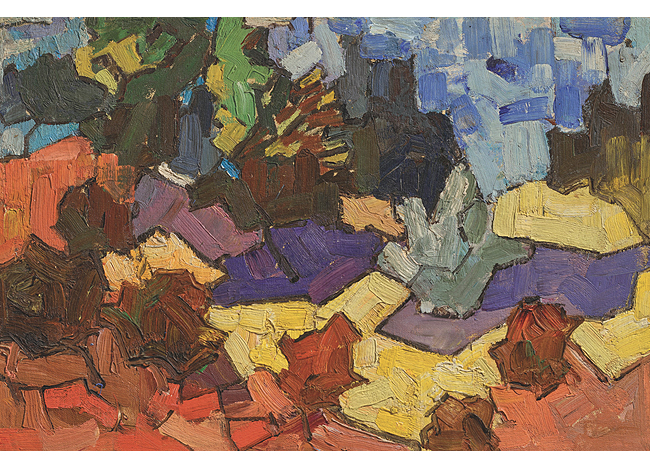
Lot 36, Mountains and Foothills
Then come a whole bunch of small, mediocre works, among them a nondescript Wicker-Chair (c.1906) ascribed to Larionov (Lot 29, est. £80-120,000). I prefer Volkov’s Mountains and Foothills (c.1915) evoked in an aggressive Fauve palette (Lot 36, est. £30-50,000). Five small mundane Roerichs have little going for them (Lots 37-41, est. £40-80,000). Nor does Vladimir Lebedev’s chunky Woman with Bouquet (1933), except for a pair of extremely tight-fitting shorts (Lot 43, est. £250-300,000).
No fewer than a dozen lots are devoted to Simkha Simkhovich (1885-1949). Who the hell is he, you might ask? To put it briefly: he studied in Odessa and at the St Petersburg Academy, fled to the U.S. in 1924, and dabbled in book illustrations, theatre scenery and murals. Christie’s material (Lots 45-56) appears to originate partly from his descendants, partly from the American trade. Top-seller is expected to be a charcoal, chalk and pencil Portrait of Gloria Swanson from 1926 (est. £15-20,000).
Looks like I will stay at home during this picture sale, sipping coffee or something stronger and putting the final touches to my epistle about Sotheby’s sale this coming Tuesday.

